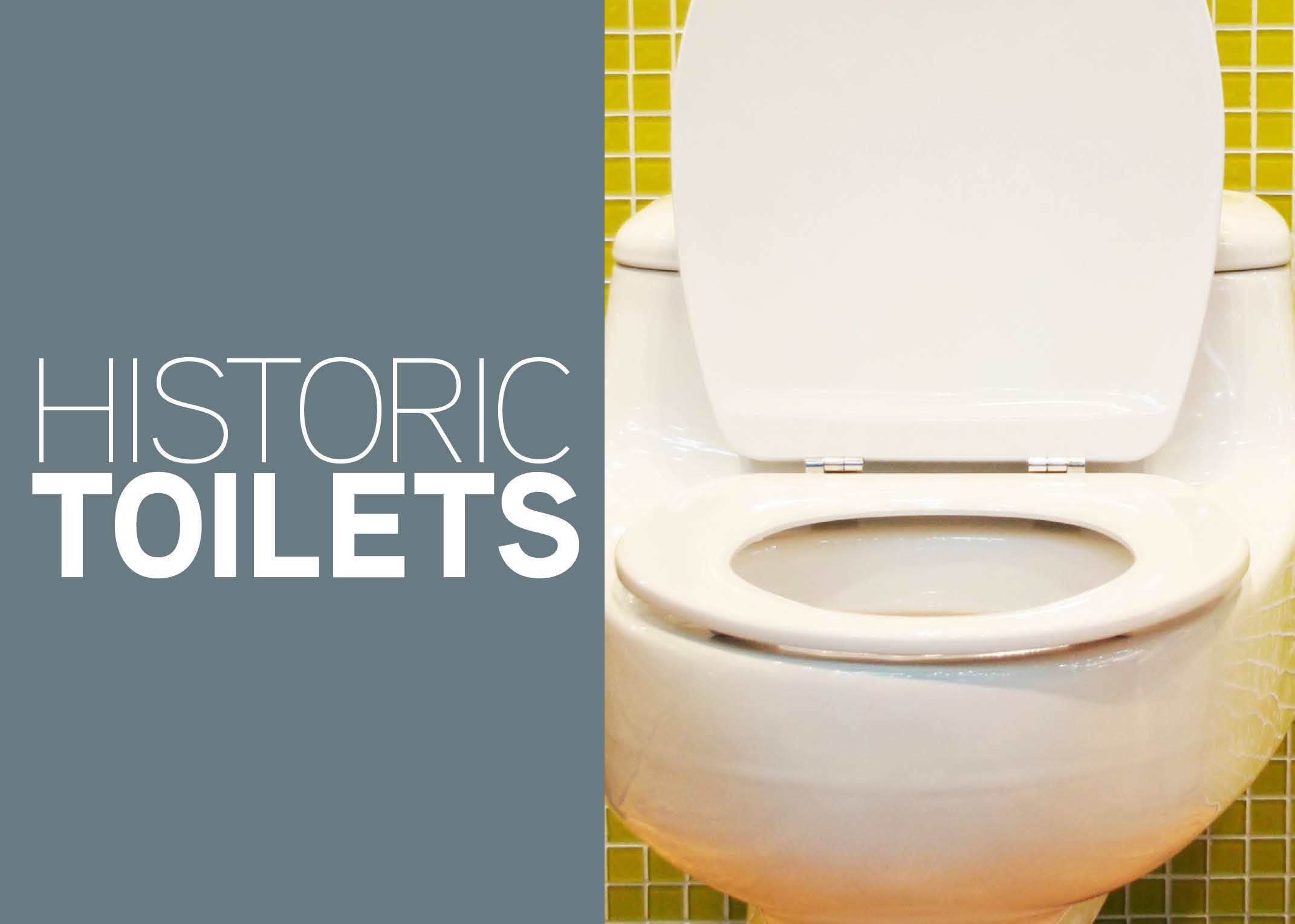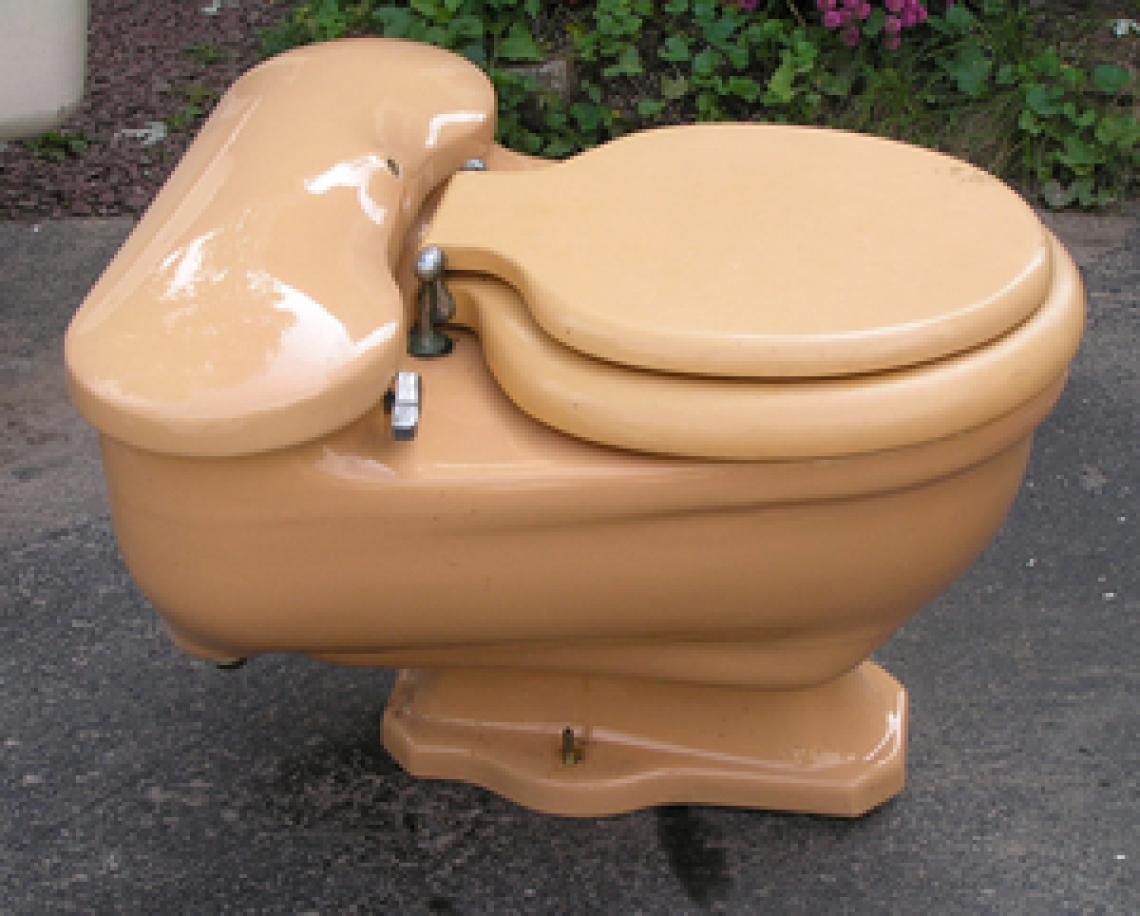
Modern toilets consist of a water tank attached to a bowl with a hinged lid. Everyone living in modern society is familiar with the toilet and uses it every day, but it wasn’t always this way. For just one moment, stop taking the porcelain throne for granted and learn how historic toilets shaped today’s most important indoor plumbing fixture.
Minoan Palace’s Flushing Water Closet
In 1500 B.C., the Minoan capital of Knossos was home to 100,000 people who lived quite modern lives for their time. Multi-stories homes dotted the landscape and surrounded the elaborate four-story, 1500-room palace in the center of the city.
The steep grade of the land allowed city workers to devise a plumbing system complete with manholes and sinks. Terra cotta pipes carried rainwater and sewage to the Kairatos River. The palace even boasted a few flushing water closets. These historic toilets were “flushed” by rainwater or by water released from cisterns, taking royal waste away from the palace.


Chamber Pots of the Middle Ages
Chamber pots were all the rage in villages of the Middle Ages. While they weren’t able to flush waste away, they sure beat walking out into the middle of the forest when nature called. The “sanitary” way to dispose of waste in a chamber pot was to dump its contents into a field every morning or empty it into a barrel held on the ground floor of buildings.
Of course, lazy folks just dumped the waste out the window and into the street. Workers on carts then collected the “night soil” and took it out to the country to compost it and sell it as fertilizer to farmers.
Alexander Cummings’ Flushing Toilet
In the 1700s, scientific advancement and innovation were in their infancy, but progress began happening quickly. It was in this setting that Alexander Cummings, a Scottish watchmaker, invented the flushing toilet. While rudimentary versions of flushing toilets existed as far back as 1596 when Queen Elizabeth I used one, Cummings was the first to issue a patent for a water closet with an S-shaped trap designed to help conserve the water needed to dispose of waste.
Cummings believed the flushing function depended on the shape of the toilet bowl. He designed a style that ensured water remained in the bowl after each flush. While it was a giant leap forward, these historic toilets had their problems, including a tendency to leak potentially explosive sewer gases into the house.


Low-Tank Toilets Starting in 1910
One hundred thirty-five years later, Cummings’ design finally arrived near the form and function of today’s toilets. The early washout closets were upgraded to wash-down and siphon-jet toilets. Tanks positioned high on the wall were lowered to just above the bowl. Ornamentation from the past that drew an inordinate amount of attention to the toilet all but disappeared, apart from a little tasteful beading.
The smooth, white, easy-to-clean porcelain surface we’re familiar with today was the norm by the 1920s, and by the Great Depression, the more affordable close-couple, two-piece toilet most often seen in residences today became widely available.
The biggest differences between a 2015 toilet and a 1915 water closet are energy-efficient upgrades including low-flow and dual-flush technologies. Other than that, they function pretty much the same.
Does this knowledge of historic toilets make you appreciate the porcelain fixture in your bathroom a little bit more? We’ve come a long way, but plumbing clogs are still a possibility. If you need help with a particularly stubborn blockage, call A-1 PLUMBING & DRAINS LTD for help.

